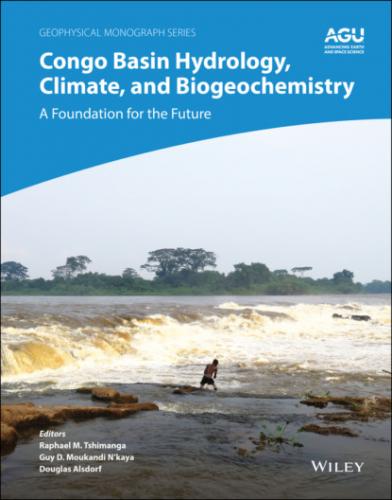Table 6.4 Statistical segmentation of the annual flows of the Ubangi River at Mobaye (1948–1995) and in the upstream basins from 1951–1995 (from the Mbomu at Bangassou and Zémio, from the Kotto at Kembé and Bria).
| Streams | Interannual average (m3/s) | Pettitt | Lee and Heghinian | Segmentation of Hubert (m3/s) | Standard Deviation | Hydroclimatic trends | Q divided by interannual average (%) |
|---|---|---|---|---|---|---|---|
| Ubangi at Mobaye (403,800 km2) | 3,059 | 1970 | 1970 | 1948–1953: 2,925 1954–1967: 3,804 1968–1968: 5,524 1969–1980: 2,986 1981–1994: 2,208 | 232 513 0 414 288 | Dry Wet Hyper Wet Dry Hyper Dry | –4 +24 +81 –2 –28 |
| Mbomu at Bangassou (115,000 km2) | 782 | 1975 | 1951–1960: 731 1961–1969: 1,051 1970–1993: 706 | 129 187 185 | Dry Hyper Wet Sèche | –7 +34 –10 | |
| Mbomu at Zemio (29,300 km2) | 171 | 1981 | 1981 | 1951–1961: 165 1962–1968: 249 1969–1980: 180 1981–1993: 128 | 22 49 37 35 | Dry Hyper Wet Wet Hyper Dry | –4 +46 +5 –25 |
| Kotto at Kembe (77,500 km2) | 360 | 1970 | 1948–1965: 401 1965–1969: 651 1970–1984: 345 1985–1993: 169 | 67 38 43 27 | Wet Hyper Wet Dry Hyper Dry | +11 +81 –4 –53 | |
| Kotto at Bria (61,500 km2) | 244 | 1985 | 1948–1984: 268 1985–1993: 134 | 40 22 | Wet Hyper Dry | +10 –45 |
Figure 6.4 Rainfall index of upstream basins of the Ubangi at Mobaye, from 1951 to 1995.
Statistical tests show rainfall breaks only on the two basins of the Kotto; Hubert’s segmentation showed three homogeneous rainfall periods at different dates, only the recent period 1992–1993 is noted as wet. However, the 1970 rainfall break characteristic of the Central African continent (Laraque et al., 2001) is not confirmed. It can only be found in the analysis of the rainfall time series from the Kotto at Bria, for which the dry period is marked over a period of nearly 25 years (from 1967 to 1991) with a significant rainfall deterioration of –12%. The Kotto at Bria is the northernmost of the six basins studied.
It is remarkable that only the Pettitt test detects a rainfall break in 1970 on the Mbomu basin at both Bangassou and Zemio. This absence of a break in the Mbomu sub‐basins is thought to be due to the impact of the forest cover that regulates rainfall systems, as also observed in the Tomi basin at Sibut in north‐central CAR (Nguimalet & Orange, 2020).
Time series of annual flows of the Ubangi River at Mobaye and the Kotto River at Kembe and Bria show a continuous overall decrease from 1948 to 1994, with no semblance of recovery in the 1990s, in contrast to the Mbomu basins at Bangassou and Zemio (Figure 6.5). Flows were generally above average until 1988 before plunging sharply. The reconstitution of flows in the Uele + Bili hydrological complex shows an intermediate picture that does not allow the identification of specific hydrological behavior that could be linked to the significant presence of tropical rainforest.
The analysis of statistical breaks (Table 6.4) makes it possible to identify the two upstream basins (Kotto at Bria and Mbomu at Zemio), which show no hydrological break in 1970, but a break in 1985 at Bria and in 1981 at Zemio. On the other hand, the Kotto basin at Kembe and the Mbomu basin at Bangassou were both impacted by a hydrological break in 1970, with a continuous dry sequence from 1970 to 1993, this sequence being more accentuated on the Kotto at Kembe since 1985. The hydrological deficit is much more marked on the Kotto river basins, a savannah area: –50% at Bria and –74% at Kembe. In the Mbomu basins, the hydrological deficits are –49% at Zemio and –33% at Bangassou.
Figure 6.5 Hydrologic index from 1948 to 1995 for the hydrological basins of the Ubangi at Mobaye, the Kotto at Kembe and Bria, and from 1951 to 1995 for the hydrological basins of the Mbomu at Bangassou and at Zemio, estimated hydrologic index of the hydrological system Uele + Bili at the confluence with the Mbomu.
6.5. DISCUSSION
6.5.1. Comparative Interannual Evolution of the Ubangi at Mobaye with the Ubangi River at Bangui
The interannual evolution of the water flow from the Ubangi at Mobaye is similar to that of the Ubangi at Bangui (Figure 6.6), with a very marked hydrological break in 1971 and a semblance of resumption of flows from 2013 onwards (Nguimalet & Orange, 2019). The flow deficit on the Ubangi at Bangui is slightly more marked than at Mobaye, with an average value of the hydrological index around –1 for Bangui and –0.8 for Mobaye. Thus the hydrological deficit of the Ubangi at Bangui is –27% between the wet period 1960–1970 (4,877 m3/s) and the first dry period of 1971–1982 (3,577 m3/s), while the deficit is slightly lower at Mobaye, –24% between the wet period of 1957–1968 (3919 m3/s) and the dry period of 1969–1980 (2,986 m3/s). The beginning of the resumption of flows recorded in 2013 comes, as on the Ubangi River at Bangui, a few years after the rainfall recovery of 2008 (Figure 6.3), but a year ahead of schedule (Nguimalet & Orange, 2019). This one‐year delay indicates a difference in the upstream–downstream hydrological behavior of the Ubangi: the hydrological support of flows is better ensured in the upstream basin.
